Page Contents
Beginner Woodworking Tool List
Here at howtogetstartedwoodworking.com, I realized it was time to make a solid list of woodworking tools for beginners. A lot of people are asking, "What tools do I need to start woodworking?" Or, "What are the basic power tools for woodworking?" Of course, you don't need to purchase all of these tools before you get started woodworking. Use this list as a guide when you plan your projects and budget your tool purchases to go along with them.
You will notice I did not include large stationery shop tools like bandsaws, table saws, and jointers in this list. These tools are essentials for professional woodworkers and undoubtedly useful for all levels of amateurs. However, this list is created specifically for those of you who are just getting started with the woodworking craft.
Do you need gift ideas for woodworkers that you know? This list is an excellent source of gift ideas for any occasion. Share the list with anyone that has a woodworker in their life. They will thank you for it!
Safety glasses or face shield:
Don't risk losing your eyesight! Safety glasses are the first thing you should put on when you enter your workshop. Experts say you can prevent 90% of eye injuries by wearing the proper protective eyewear.

Be sure any safety glasses you purchase comply with ANSI standards too.
Read more about OSHA eye safety here: https://www.osha.gov/SLTC/eyefaceprotection/index.html
Hearing protection:

Protect your hearing with appropriate earplugs, earmuffs, or a combination of both. I always wear a pair of foam earplugs when using power tools in the woodshop.
When cutting wood with a circular saw or table saw, wearing decibel reducing earmuffs over foam earplugs is my mode of operation.
Remember, hearing loss is cumulative. Multiple exposures to high levels of noise will eventually ruin your hearing, so please take measures to protect it.
https://www.osha.gov/SLTC/etools/shipyard/ship_breaking/ppe/general_ppe/hearing_protection.html
Dust mask or respirator:
Every time you work with wood, you will be making dust. Wearing a dust mask or respirator will help keep the majority of harmful dust particles out of your lungs. Many wood products today are manufactured using dangerous chemicals. The wood may have been treated with chemical pesticides before processing at the sawmill, as well.
Almost all natural woods will irritate your lungs as sawdust, or sanding dust and can cause severe lung problems. Avoid a trip to the emergency room, if you think I'm joking, check out this list: (https://www.wood-database.com/wood-articles/wood-allergies-and-toxicity/)
Now please buy a respirator.
Measuring Tools For Woodworking
Combination Square:
A Combination square is made of a steel ruler and a Square Head that is adjustable and removable. You can use the combination square to check 45° and 90° angles and layout projects. It is both familiar and indispensable in all workshops.
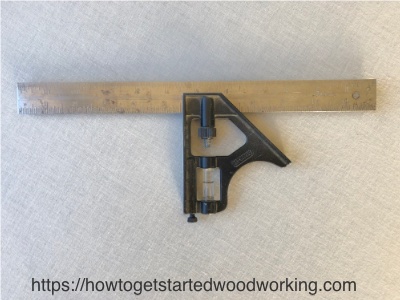
Tape measure (10' to 25'):
I like to have a couple of tape measures on hand. A 10 or 12-foot tape measure fits easily in my pocket when going to the lumberyard or for small measuring jobs. A 25-foot tape measure is useful for larger measuring jobs. Be sure to read my article about selecting A Tape Measure for Woodworking here.
Compass:
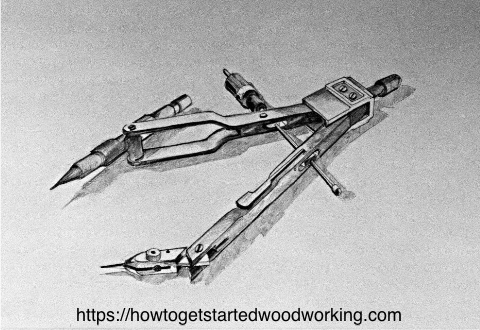
Not just for geometry class, the compass has many purposes in woodworking. A compass will help you quickly divide into equal sections, locate the center of something, divide a board precisely in two, draw circles, and much more.
Sliding Bevel:
Also known as a bevel gauge or sliding T, you use the sliding bevel for copying and transferring angles. A sliding bevel has a wood or plastic handle to which a metal blade like an unmarked ruler attached with a screw and wingnut. You can pivot the blade and lock it at any angle to copy angles from one place to another.
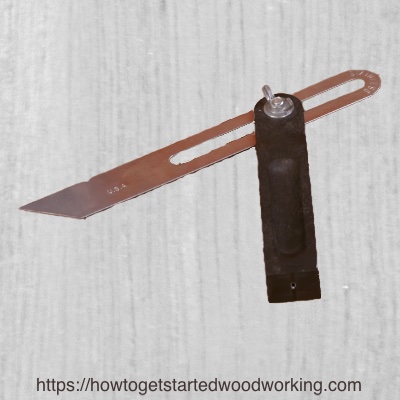
Marking Gauge:
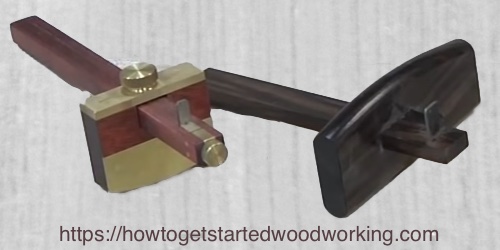
A square stick with an adjustable sliding block of wood characterizes this simple tool. A pin, or "spur" is at one end of the stick.
Marking is done when you drag the pin down the grain of the wood with the block firmly held against the edge. This tool is to be used to mark with the wood grain.
Cutting Gauge:
Almost identical to the marking gauge, cutting gauges have a blade instead of a pin. These tools can be dragged across the grain to make a clean mark.
Framing Square:
Generally made from steel, the framing square is used as a straightedge and for measuring right angles, especially when marking wide pieces of stock for cutting.
Scratch Awl:

Put a handle on a steel spike with the tip filed to a fine point, and you have a Scratch Awl.
Used to scribe lines on stock for sawing or chiseling and the joint making process. Or, to define an exact point, buy poking the tip into the wood. I find the scratch awl much more accurate than a pencil.
Folding Rule:
The folding rule is about 6 inches long when folded and 6 to 8 feet long when fully extended. The folding rule is useful for measuring inside boxes or casework. The folding rule is more rigid than a tape measure, so you avoid the "floppy tape" frustration.

Not as commonly used today since the invention of the tape measure, the folding rule still is an excellent tool to have.
Basic Power Tools For Woodworking
Electric Hand Drill (3/8 or 1/2" variable speed):
An electric hand drill is essential to every woodworker. Choosing a quality tool with either 3/8 eighths or 1/2 inch Chuck, and ensure it has a variable speed trigger. In time you will discover that having more than one portable electric drill on hand is very useful.
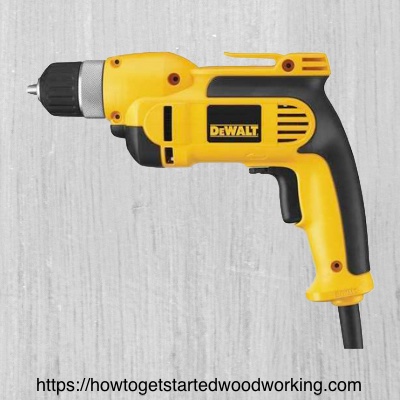
I often use three drills to save time changing the bits. See more on drills here.
Hand-held Circular Saw (7 1/4"):
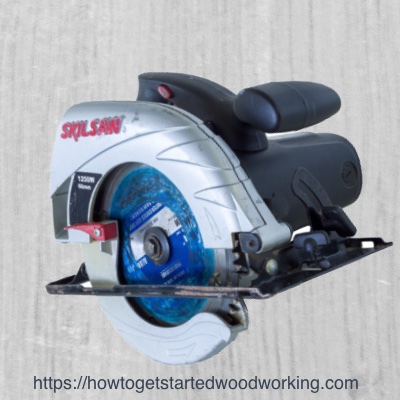
Circular saws are extraordinarily versatile and endlessly useful for cutting many different materials such as masonry, plastic, metal, and of course, wood. Many different types of blades are readily available for use on each material type.
Learn about choosing circular saws here. Also, see my top saw recommendations here in my latest circular saw reviews.
Random-orbit sander:
A hand-held Electric Random orbital sander is an essential tool. You can Sand all of your projects by hand, but you will spend a very long time trying to achieve the results you get in just minutes with this tool. I prefer a sander that has a square base that accepts one-quarter sheets of sandpaper.
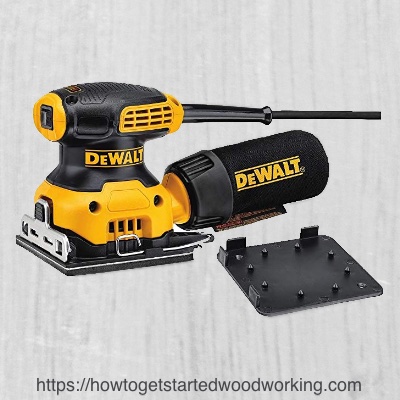
Buying sheets of sandpaper in bulk and cutting them for use on your sander will save a lot of money. It is also easier to find a better variety of sandpaper types in the sheet form rather than in the pre-cut circles required for round sanders.
Router:
Using a router, you will be able to shape the edges of your woodworking projects. There is what seems to be an endless variety of router bits available to shape the edges of your project in any way you can imagine.
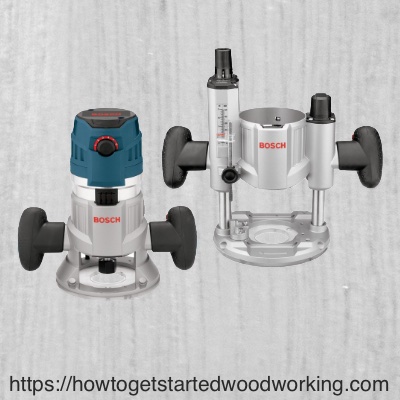
Stationary routers will do almost everything you need, especially as a beginner. Plunge routers may cost a little more but are very versatile and are suitable for any routing task.
Belt sander (3" x 21"):
Shaping and rough finishing wood can start with a belt sander. Belt sanders are very aggressive on wood, so I rarely use one unless I know I am removing a large quantity of material. They are very effective at removing paint and finishes. Be sure the belt sander has some form of dust collection capability. And wear your dust mask or respirator.
Compound Miter Saw:
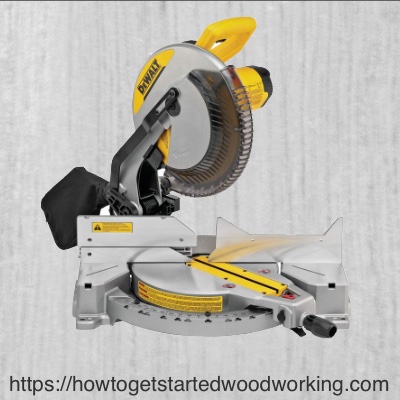
Have you ever used a tenon saw in a miter box? If you have, you know the difficulty of getting a precision angle cut. The compound miter saw makes angled cuts that are glassy smooth with minimal effort. Look for a saw that adjusts to a 60° angle in both directions, and a bevel that you can set to 45°.
It should also have built-in hard-stops at 0°, 15°, 22.5°, 30°, and 45° on both sides of the center. These features tend to be standard on most commercially available compound miter saws.
Shop Vacuum:
Woodworking makes a mess. Shop vacuums make cleanup more manageable, and you can connect them to many dust collection ports on power tools. Shop Vacuums keeps the air and the rest of your workshop cleaner.
Woodworking Tool Accessories
Jigsaw Blade Assortment:
Once you own a jigsaw, having a variety of good blades for different cutting tasks is essential. Purchasing a jigsaw blade assortment will save you a lot of trips to the hardware store to buy a single blade. You will usually save a lot of money purchasing an assortment rather than one blade at a time.
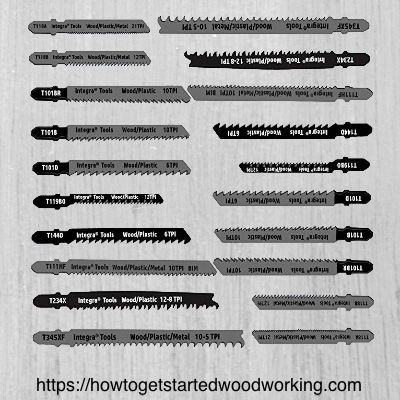
Twist drill bit assortment:

Look for the most extensive set you can find. The holiday season is ideal for finding great deals on drill bit assortments. The best drill bit sets have several small bits in each size category as they are most likely to break during use.
For more drill bit information, Click here to see my post "7 Types of Drill Bits You Need."
Brad-point drill bit assortment:
When it comes to drilling clean precision holes, a Brad-point bit assortment will be your best friend. Again, looking for an assortment during the holiday season (Christmas in the US) is the best time to find exceptional deals.
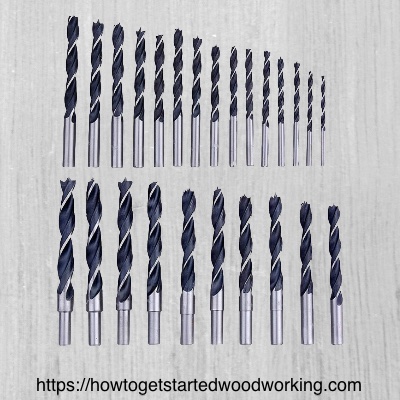
Spade drill bit assortment:
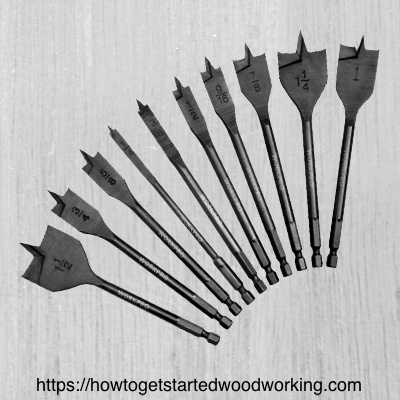
The sizes from 1/4 inch to 1 1/2 inch, the spade bit is a standard for every tool kit. I find Spade bits most useful for drilling holes over 1/2 inch in diameter. They are relatively inexpensive drill bits and very functional for rough projects.
Doweling jig:
Joining narrow boards together to create a wide board can be accomplished using a dowel joint. You must align the dowels perfectly for the best results, so the Dowling Jig is the tool of choice. I prefer the commercially available jigs as they remove the guesswork and allow me to build better projects more efficiently.

Router bit assortment:

Like any other assortment, router bits are much less expensive to purchase in a set than they are to buy individually. Router bit sets vary from three router bits to over 50. Consider the price and the types of projects you are building when you purchase.
Sharpening stone:
Every tool used for cutting wood will get dull. A quality sharpening stone with a coarse/fine or dual-purpose grit will help you maintain a Sharp edge on your chisels, and make woodworking much more enjoyable.
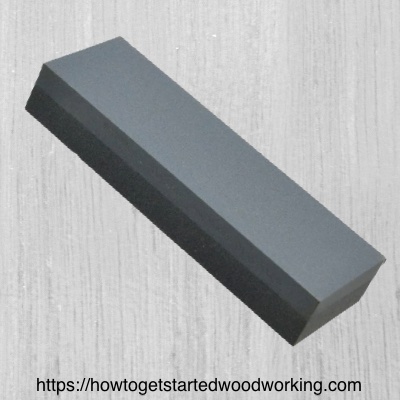
Saw Horse:

A horizontal beam with four legs, the sawhorse is versatile and essential for the woodworker. Build your own as a first woodworking project, purchase a kit or prefabricated plastic sawhorses. I prefer the prefabricated plastic sawhorses as they are sturdy and fold up quickly to get out of the way.
Brooms and dustpan:
You need a Counter brush, Standard broom with synthetic bristles, and dustpan. For a larger workspace, a 24-inch push broom with fine bristles speeds up your cleaning efforts.
Tool storage:
Self-made or one of many available on the market. Once you own tools, being able to find them quickly and efficiently will go along way to ensuring your woodworking experience is a happy one. Getting your workspace organized will be essential to your efficiency, safety, and enjoyment.

Hand Saws For Woodworking
Crosscut saw:
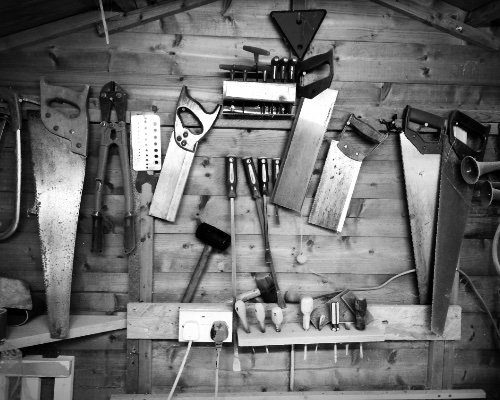
The saw teeth are designed specifically for cutting wood perpendicular to the wood grain on the crosscut saw. You will find it very useful for simple cuts that don't require setting up a power tool.
Backsaw or dovetail saw:
The Backsaw has a reinforced rib on the blade opposite the cutting edge. This reinforced blade offers more control and stability than other saws. It is used for precision cutting such as miters, tenons, and dovetails in the joinery process and furniture making.
Ripping saw:
Very similar to the crosscut saw the ripping saw is designed to cut wood parallel to the wood grain.
Coping saw:
The coping saw is used for cutting ornate shapes and cutouts. It has a thin blade that is held tight by a C shaped bow frame to which a wood or plastic handle is attached. The blade is easy to remove so you can pass it through a hole drilled in the middle of a workpiece and cut an intricate center design or a simple circle.
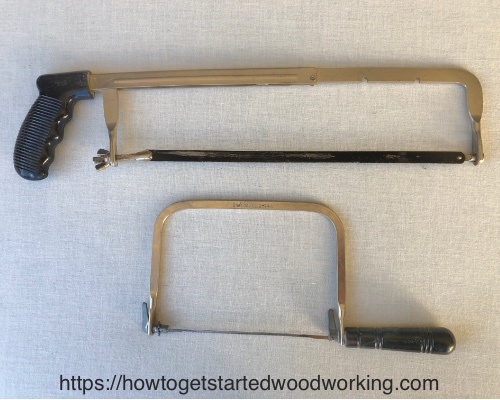
Hacksaw:
A type of bow saw, with small teeth initially designed for cutting metal. This saw is something you need in your shop. You never know when you may need to saw through a broken screw or nail.
Traditional Woodworking Hand Tools
Smooth plane:
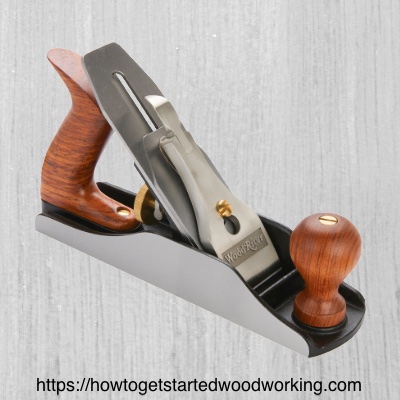
A smoothing plane is a finishing tool that creates a smooth surface that is equal to or better than one made using sandpaper. There is definitely a learning curve to using a smoothing plane effectively.
Low-angle block plane:
A smoothing plane is a finishing tool that creates a smooth surface that is equal to or better than one made using sandpaper. There is definitely a learning curve to using a smoothing plane effectively.
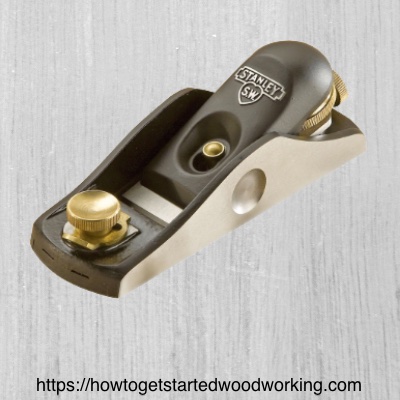
Wood chisels (1⁄4 ", 1⁄2 ", 3⁄4 ", 1"):
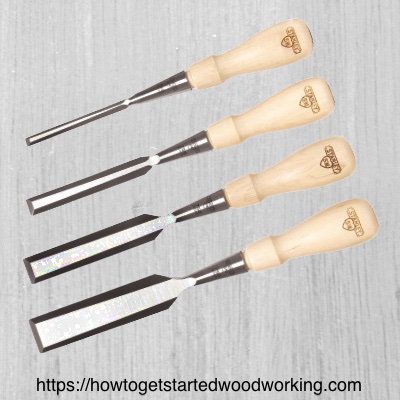
You can't underestimate the usefulness of a good wood chisel set. A quality set of chisels can last a lifetime and will assist you in completing a multitude of projects.
Cabinet scraper and hand scrapers:
Possibly my favorite hand tool, the cabinet scraper, is easy to use and can produce finish superior to sandpaper. The scraper itself is a rectangular piece of hardened steel. Once the edges of the scraper are correctly prepared, the scraper is used to remove very fine layers of wood, leaving a silky smooth surface behind.
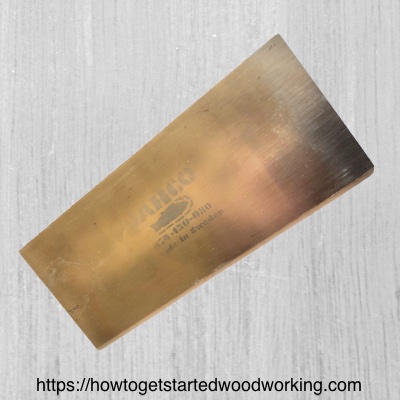
Flat rasp, Half Round, Round, or "Four in Hand" rasp:
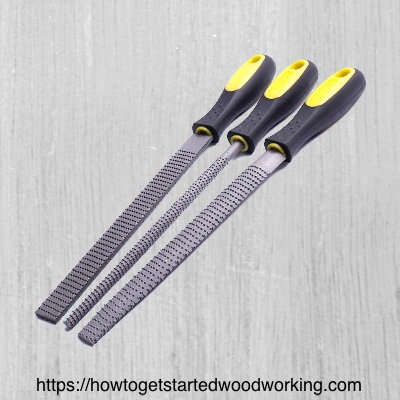
All rasp files are made from case hardened steel and have individual teeth that appear to have been formed one at a time. Rasps are manufactured in the flat, half-round, and round files, and you use them for rough shaping of wood.
The "four in hand" rasp is a very convenient tool. It is one file that has a flat side and a half-round side, each consisting of a rasp and a mill bastard file at each end.
Screwdrivers, Standard (flat) and Phillips:
Another tool best purchased as a set is screwdrivers. Look for an assortment with both Standard and Phillips tips with various sizes of each screwdriver type.
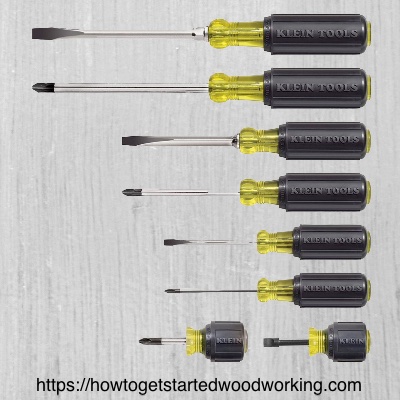
Claw hammer 16 oz.:
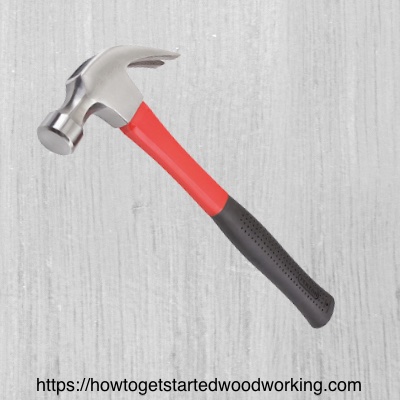
Claw Hammers, used effectively for both building and demolition, is one of your most fundamental tools.
Finishing Hammer 8 oz.:
Putting the finishing touches on casework or wooden trim in your home requires a light and smooth hammer. The Finishing hammer is much less likely to damage the beautiful finish you have created. Be sure to purchase this tool when your project calls for it.
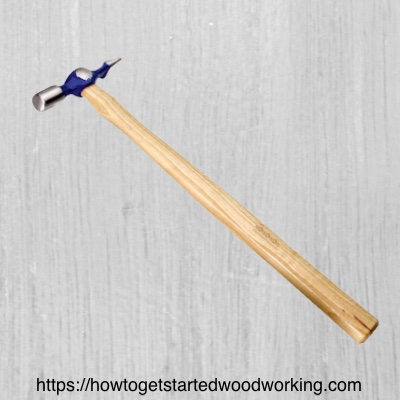
Nail Set:
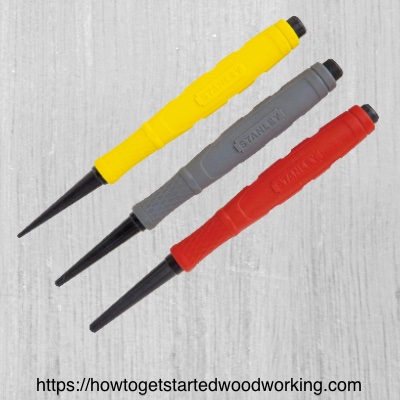
Once you use your finishing hammer to pound nails in your project, the next step is to drive the finishing nail below the surface of the wood with a Nail Set. Follow this step with a quality putty that matches your would finish, and the nails will be virtually invisible.
Wooden mallet:
When assembling woodworking projects, it is often necessary to "tap" the tight-fitting pieces together. A wooden mallet is perfect for this. It allows you to dry-fit your project pieces together and take them apart again without damaging the surface.
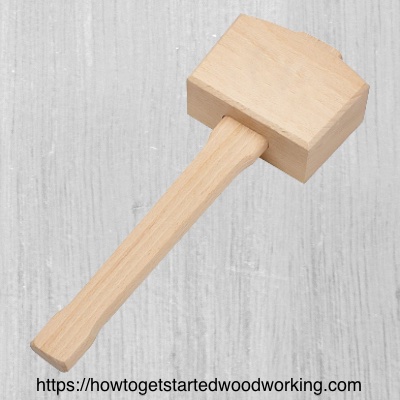
Utility knife, Segmented blade or "snap-off blade" utility knife:
In any shop, you will need to cut "stuff" like cardboard, rope, wire, plastic, and a host of other things. Be sure to get a solid utility knife with a retractable blade.

I prefer the snap-off blade type of utility knife. Snap off blades can be extended much farther than traditional utility knife blades. For example, cutting 2 inch Styrofoam insulation sheet is made simple with this extended blade feature, it is not so easy with a traditional utility blade.
Wood Clamping Tools
Workbench:
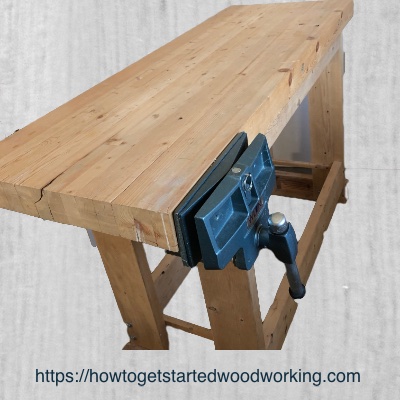
The foundation of your shop is a sturdy workbench. You can clamp your projects to your workbench by using a woodworking vise. Your workbench is quite possibly your most essential and fundamental tool for making woodworking a pleasure.
Bench vise:
The woodworking bench vise is attached to the bench and can hold all of your wood projects safe and secure.
I have used the Wilton Model 63144 Woodworkers Vise for many years. I am delighted by its strength, pivoting jaw, quick release feature, and overall ease of use.
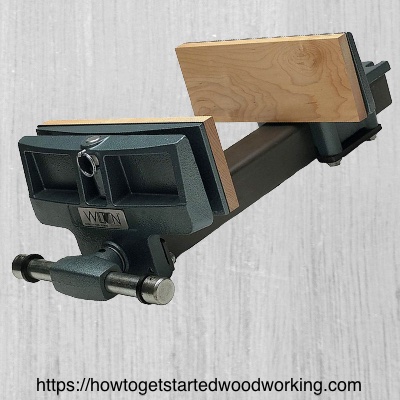
Hand screw clamp:
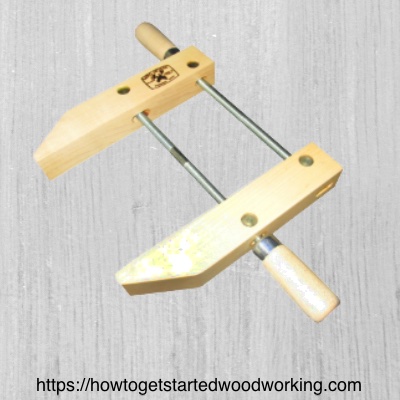
Look in any woodshop, and you will likely find several wooden hand screw clamps. Use it for clamping a multitude of different shapes and sized projects. The two screw mechanism provides the ability to clamp at odd angles where other clamps fail.
Bar or pipe clamps:
Larger projects require larger/ longer clamps. For example, assembling a 3-foot wide cabinet will require several clamps that are greater than 3-feet long. I don't believe that anyone could have too many clamps. Continue to purchase these as you need them for your projects.

C-clamps:
C clamps were named for their shape and are usually smaller than 10 inches. Let your imagination be your guide to the almost innumerable tasks these clamps help you complete.
F-Clamps:
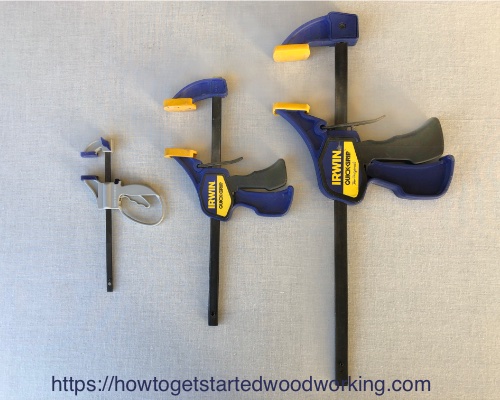
Another clamp named for its shape, F-clamps are a type of bar clamp. F-clamps are often made with a quick action pistol grip to tighten and a quick release tab.
These clamps can be used one-handed and are very useful for assembling projects. F-clamps come in many sizes from a few inches to a few feet.
Woodworking Supplies
Utility Knife blades:
Having a stock of sharp utility knife blades on had will save you time and effort. Using sharp blades is also safer.
Sand Paper:
Purchasing a supply of sandpaper in several types of grit (such as 60, 80,100,120,220, 320, 400) gives you a lot of flexibility in finishing your projects. Sandpaper is an often overlooked tool. Stocking up in advance will make your woodworking experiences much better.
Wood Glue:
Wood glue is essential to almost every project. My favorite has been the Titebond brand. It comes in several different formulas appropriate for anything you build.
Finishing Touch
It has been fun putting this list together for you! It was my goal to give you a brief description of each tool and its function. For some of the more common tool descriptions, I did assume some previous knowledge on the part of the reader.
If you have any questions about the tools in this list, please put them in the comments below or send me an email and I will get back to you soon.
As you begin your first woodworking projects, I hope you thoroughly enjoy the process. Planning, purchasing tools, and creating something new from this marvelous material will bring great satisfaction. You will only be limited by your imagination!
Did you like what you found here? Please sign up and receive future posts directly in your email. Or find us at Woodworking For Beginners on Facebook
Here's to your woodworking success!

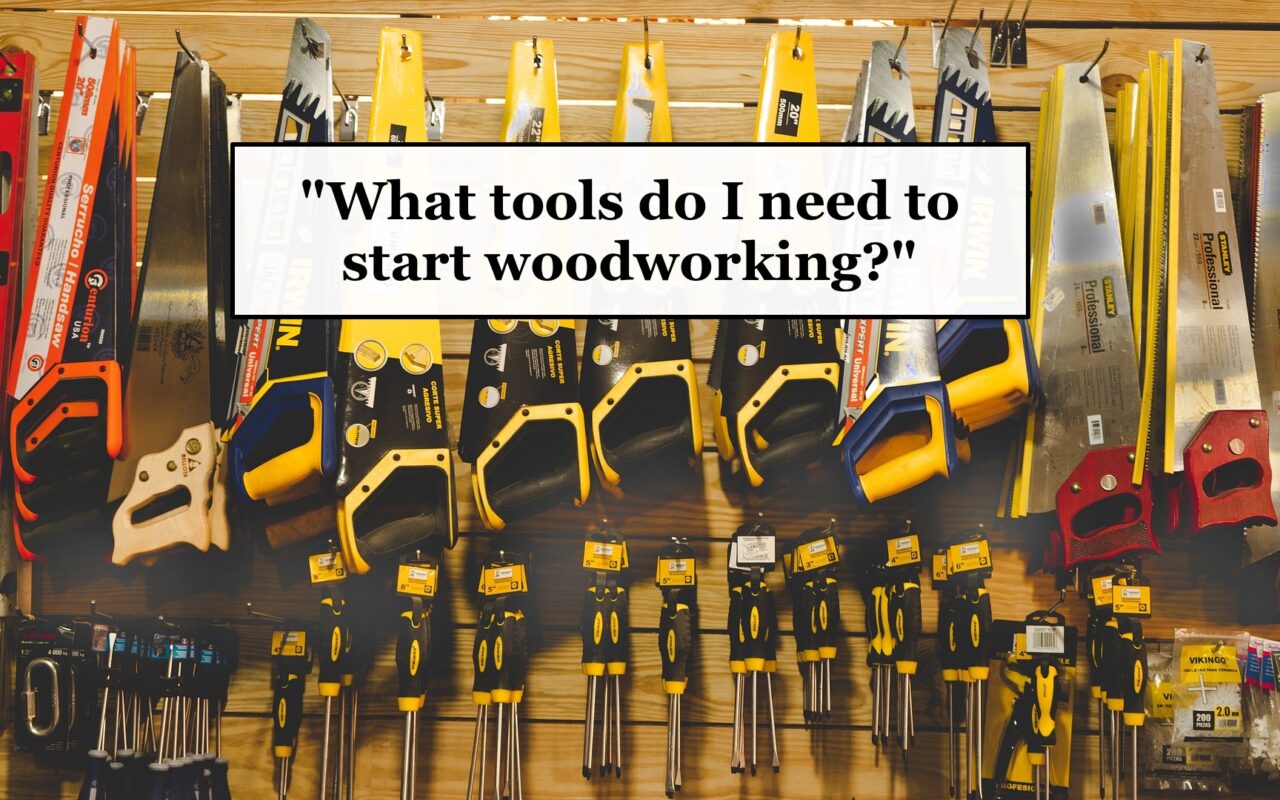
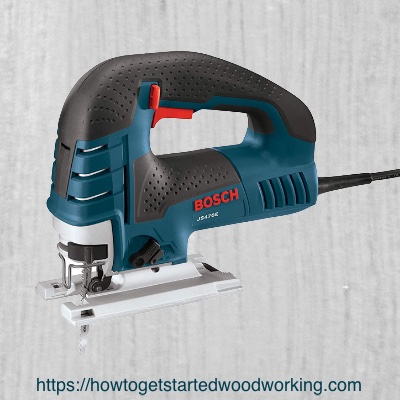
Hi Greg,
Thank you for the wonderful article on beginner woodworking tools, I agree with your recommendation to use hearing protection. I neglected woodworking hearing protection for a long time and I regret it so your advice is spot on. I have a question for you:
You recommended BOSH as the brand to go for Jigsaw and router, do you know any high quality cheaper alternative?
Thank you.
Hello Jordan!
Thanks for the message! I appreciate your support of woodworking safety. All too often our hearing is neglected. To answer your question, yes, there are cheaper alternatives to the Bosch brand. You can be very confident in considering DeWalt, Makita, or Porter Cable as well. There are a lot of different models available that will fit almost any budget. I hope to do a review on Routers soon.
Cheers!
To work safely, take your senses as a reference and look to protect all of them. Remember, safety is first! Thanks for putting together a very complete list (the long path is starting a project and then, going to the near hardware store 3 to 5 days per week).
Thes tools may be classified as :
+ Cutting + Drilling + Subjection + Marking + Finishing
All of them have very specific use and it’s important to know it. Using the tools in the wrong way may cause injuries or reduce the useful life of the tool.
When preparing to get a wood project done, having all the tools in place is very important to deliver the expected results in a timely matter.
Thanks for your comments Juan! I really like to emphasize safety in everything I do too. Using the proper tool for each step in a project makes the process fun and easy to accomplish. How right you are, that using tools the wrong way can cause injury and ruin the tool itself. It’s so important to read operating manuals and be familiar with safe operating procedures.
Have a great day!
Hi Greg! I’m a beginner concerning woodworking. And I have been searching posts online that may help me get started and your article caught my attention.
I need to buy an Electric Hand Drill and a Random-Orbit Sander. But I was looking for a link on you post to buy these and didn’t find it. Could you please tell me were can I get the best deal? What do you suggest?
Hi Abel,
You can check out these posts Every Woodworker Needs A Portable Electric Drill and Dewalt Cordless Drill Review. I do have an affiliate link in the review article for purchasing on Amazon. I live in a fairly rural area and find that Amazon has had the best deals and shipping service. (especially for Prime ) The DEWALT Random Orbit Sander, 5-Inch (DWE6423K) is a good choice for the sander.
All the best to you as you get started woodworking! Let me know what you’re building sometime.
Cheers!
This is just a great article. Thanks for the list of tools. I think I have all of them with the exception of the awl and the bending ruler. I have done a few small projects, but I want to begin to do some toys that I have designed for a grand child. My diffiuculty is that I don’t have the space to work and then walk away leaving things until the next time. Your article has inspired me. I could get started today.
Thanks Anastazja!
I hope you get an opportunity to create the toys you have designed! To have such a gift from a grandparent would mean a lot to any grandchild.
All the best to you!